#first category portland
Explore tagged Tumblr posts
Text
It's not often that I post about men in a positive light but applause to this guy.
By Reduxx Team June 18, 2024
The head track and field coach at a high school in Oregon has been fired after writing letters to state officials expressing his concerns about allowing biological males to compete with girls.
John Parks, who had been employed at Lake Oswego High School since January of last year, says his contract was terminated shortly after he began speaking out against trans-identified males self-identifying into female races.
Parks explains that he first wrote the Oregon Student Activities Association with his concerns just before the controversial May 18 state championships where a trans-identified male student participated with the girls.
The student, Aayden Gallagher, had been the source of much outcry after dominating a number of races in the qualifying matches leading up to the state championships. In April, Gallagher won multiple awards in Girls Varsity races, but he finally secured his place at state on May 9 when he took two gold medals at the Portland Interscholastic League meet.
Gallagher ultimately seized first place in the Girls Varsity 200m at the championships, and was booed upon taking the winner’s podium.

Following the championships, Parks wrote another letter, this time to Oregon Senator Rob Wagner.
In the letter, Parks argued that current Oregon law, which allows males to self-identify into women’s sports, was creating an unfair playing field for female athletes.
“The OSAA competition rules need to be aligned with what the rest of the world competes under,” Parks wrote to Senator Wagner, referring to the hormone testing and restrictions enforced by the International Olympic Committee and other sporting bodies.
“My proposal to encourage transgender participation is to offer an open division that is so named so it doesn’t identify or discriminate but offers an opportunity to participate,” he continued in his letter. Parks says he does not oppose transgender students playing in school sports, but that separate categories were needed to ensure fairness for girls.
He also noted that mixed-sex competitions were becoming an issue for the trans athletes as well, pointing out that Gallagher had been ‘booed’ by the crowd during the state championships.
“I want them to be able to participate where they’re not ‘booed,'” Parks said, speaking to local KATU. He says he is now in the process of appealing his termination.
“I’m going to fight now because I got wronged,” he told KATU. “I … am fighting for girls, I’m fighting for female sports, and I’m fighting that it be fair for everybody.”
#usa#Oregon#John Parks has common sense#Lake Oswego High School#Oregon Student Activities Association#Aayden Gallagher is a cheating male#Girls Varsity races are supposed to be for girls#Portland Interscholastic League meet#Men who claim medals in womens sports should be booed#Parks even suggested a third category so everyone can compete fairly#Trans identified athletes won't be booed in open competitions
15 notes
·
View notes
Note
My family is still staying in half of the church that wasn’t affected by the bombing because there is nowhere else to stay other than tents. They are limited to one small meal a day and one shower a week. They are sleeping on the floors, but no one can sleep since there is bombing everywhere around them. Even when there is no bombing, they can still hear the loud buzzing sound of the military planes above them, which would keep anyone who hears it awake. Along with everything, My grandma has diabetes and osteoporosis, so she can’t walk. She has to take her insulin medication along with many others; however, she has run out of many of her medications.” Am on my knees requesting for donation. Target $450
FUCK OFF!!
I clicked on this page to see if this was a vetted account and immediately got suspicious when the comments were hidden, the only person that said anything about vetting in the reblogs claimed this hasn't been properly vetted and the fundraiser link redirected me to a PayPal account under the name Janet Cheptoo.
I thought this was weird. So I did more digging, which wasn't hard since I just had to look up the name "Janet Cheptoo" in the Tumblr search bar.
Below is an awfully familiar ask sent to @bpcol-reblogs with a COMPLETELY DIFFERENT USERNAME, who pointed out all the ways that make this message seemed very scammy and listed all the points I noticed and more. :/

So which is it? @happilygeneralhideout or @fulldragonsalad? A second username isn't too bad tho. People can have more than one blog. HOWEVER, the posts that followed under the Janet Cheptoo tag didn't really help this case.


It's pretty bad getting called out by 3 different parties on the first three posts that come up when you look for dear Janet, isn't it?
Sadly, scammers are their own category of fucked up, at least enough to make any bottom-feeding leeches of the earth blush something red because the cruelty of stealing from people only trying to help doesn't really stop there!
Apparently, @fulldragonsalad had been ripping off an actual fundraiser, which I linked below in case anyone who sees this can and wants to help people in real need reach their goal and find someplace safe.
All that being sad, FUCK YOU, JANET!!! 🖕🖕🖕🖕🖕
#we stand with palestine#free palestine#palestinian genocide#donation scam#scammers#scam alert#janet cheptoo#fuck scammers#real fundraiser included#fundraiser#donate if you can
3 notes
·
View notes
Text

It's #FreddieMercury #Birthday!
My prints of #Mercury at @GalleryNucleus here: https://www.gallerynucleus.com/artists/david_mack?category=prints
& you can order my cover to the new #Freddie #GraphicNovel.
@Z2comics
Thanks for the incredible love at @dragoncon ATLANTA!
A record-breaking show!
I will be SIGNING at:
@baltimorecomiccon ! THIS WEEK!
@RoseCityCC! PORTLAND
@nycomiccon NEW YORK
#SanFrancisco Expo! SF BAY AREA
@braveandboldart TOKYO JAPAN
@TokyoComicCon
#Japan!
Thanks for the incredible orders on THE MARVEL ART OF DAVID MACK book!
Can still order it at LINK in my BIO
@clover_press
Find prints & originals of my work at @KirbysComicArt
& if you want CGC signings of my work but can't make it to a convention, @cgcsignatureseries is offering my Signature & REMARQUES on books now through Sept 29.
My creation of MARVEL Studios #ECHO JANUARY on Disney+
Thanks all of you who have supported my books & work over the years!
Can you believe it's 25 years since I first created ECHO on my first work at MARVEL as WRITER for #Daredevil?
And 30 years since my first KABUKI story! (Which is what got me the offer to start writing Daredevil at Marvel.
All my KABUKI books at @DarkHorseComics.
Including our creator-owned series called COVER with @BrianMbendis, inspired by my overseas work for the US State Dept.
Updates on KABUKI soon!
7 notes
·
View notes
Text
By: Lisa Selin Davis
Published: May 17, 2023
Lily Cooney was fully committed to social justice. In the wake of George Floyd’s death, the now-26-year-old writing tutor marched proudly in Black Lives Matters protests through the streets of Portland, Oregon.
But the culture in which she was steeped began to take a toll on her mental health. As a white person, she felt responsible for America’s racist legacy of slavery, and worried about her relationship with her Asian American girlfriend. “I felt like I was hurting her, harming her, just by being white,” Cooney told me.
Though she knew she was a lesbian, she began to identify as nonbinary, a result of her understanding that being a “cis woman” was “associated with colonization and white supremacy and oppression.”
One day in June 2020, she found herself suddenly unleashing a tirade against the next-door neighbor of a friend, a white man who said he supported BLM but had cops in his family whom he supported, too. “I had this moment afterwards where I was like, ‘This is not how I want to behave. I don’t want to be a person who just screams at people because they’re white.’ ”
Anxious and depressed, she had trouble concentrating on work. “I started just going a little crazy,” she said. She decided she needed therapy to work on both her “internalized white supremacy,” her “white guilt,” and to “become a better person.’ ”
In January 2021, Cooney sought help from a black therapist in Portland she found through a therapy database, who agreed to work with her around issues of race and gender.
Initially, they practiced mindfulness and self-compassion techniques, from forgiving oneself out loud to the “butterfly hug,” crossing arms and tapping the chest. The therapist even cried with her when she cried about sexual assault or feeling unsupported in relationships. Cooney felt supported and eventually, more in control, more accepting of herself as female.
Then something unexpected happened. The stronger and more mentally healthy she felt, the less Cooney viewed the world through the lens that had informed her activism—a binary perspective that split all people into categories: white and black, oppressor and oppressed, victimizer and victim.
“I care about equality, I care about racism, I care about homophobia, I care about trans people being safe. I just don’t want to walk around in the world where everyone’s thoughts, feelings, and behaviors are dictated by their identities,” she said.
Cooney wanted to share her newfound realizations, but feared being canceled and ostracized—by her friends, fellow activists, perhaps even her girlfriend. The burden weighed on her, and therapy seemed the place to address it.
When she first tried to do so, in June, 2022, Cooney’s therapist reacted badly. She told Cooney that critiquing cancel culture was giving in to “white supremacy culture,” and said Cooney was making her feel “unsafe” as a black woman. By the end of the session, the therapist had given her an ultimatum: they could continue to work together and keep cancel culture discussions off the table, or “the relationship was over,” Cooney said.
Cooney continued with the therapist for six more months, but her therapist seemed to emphasize Cooney’s victimhood, reiterating that other people were responsible for her oppression as a gay woman. “She said, ‘You’re not free because of homophobia and sexism. You’ll never be free.’ ”
Cooney began pushing back, expressing views the therapist had declared taboo such as not wanting to categorize people based on their identities, or asserting that too many people were being shamed and punished for minor supposed transgressions. Finally, her therapist told Cooney their relationship was finished.
Ultimately, the thing she had feared the most—being canceled for her views—had happened, by the person with whom she was supposed to be able to share her deepest secrets. “I was just totally in shock, just kind of dead inside,” Cooney told me.
Cooney is not alone in finding therapy overtaken by the same kind of social justice ideology prevalent in schools, medicine, and the law. I spoke with more than two dozen therapists and clients who painted a disturbing picture of what happens in the treatment room when therapists make the tenets of this ideology central to their work, instead of offering empowering approaches that help patients make better choices and take control of their lives. Some patients, like Cooney, have also found themselves “fired” for expressing unacceptable thoughts.
I spoke to new therapists, some still in training, who describe a profession that teaches the ascribing of oppressor or victim categories to patients, based on their innate characteristics, instead of seeing them as individuals. Several sources said their applications to graduate schools required them to make a written commitment to anti-racism. Some said they’d been penalized for asking the “wrong” questions in class, detailing how this ideological encroachment damages their own mental health.
I reviewed mission statements and other documents released by professional organizations in recent years, revealing how this revolution has transformed the central tenets of the therapeutic process.
And I talked to psychologists and others fighting back. They described their alarm at how the very people who are supposed to help ease trauma become the source of it, as therapy sessions transform into ideological struggle sessions. British psychotherapist Val Thomas told me “the reason this happened is that activists captured the institutions and professional bodies of counseling and psychotherapy.”
At a time when as many as 90 percent of adults believe there’s a mental health crisis in this country, parts of the mental health profession are in crisis too.
An Overcorrection
There is no doubt that, historically, the fields of psychology and psychiatry—founded in the 19th and early 20th centuries by men like Sigmund Freud, Alfred Adler, Carl Jung, and others—made many mistakes and did people serious harm. Bookshelves are filled with volumes on the mistreatment of women. In the early 20th century the field embraced eugenics, leading, especially in America, to appalling treatment of black people. Homosexuality was classified as a mental illness until 1973.
In recent decades, the profession has sought to address its bad treatment and historic wrongs. This led to the development, in the ’80s, of “cultural competency”—an awareness of one’s own biases and a commitment not to impose them onto clients. Subsequently, as psychiatrist Sally Satel describes in a recent article, the idea that therapists required specific training to treat minorities expanded. By the early ’90s, the American Psychological Association (APA) had updated its ethics code, requiring therapists to behave in “culturally sensitive” ways and appreciate “the worldview and perspectives of those racially and ethnically different from themselves.”
“The whole point of understanding cultural differences was that you didn’t walk in and assume,” says Christine Sefein, until recently a professor of clinical psychology at Antioch University’s Los Angeles campus. But over the past decade—spurred by the rise of social media, Trump’s election in 2016, and George Floyd’s murder in 2020—Sefein, like many in her profession, began to see the mission change to something more insidious: imposing the bias and framework of Critical Social Justice (CSJ)—the term some psychologists use to refer to social justice ideology.
According to CSJ, one’s identity categories are paramount to the therapeutic process. Neutrality and objectivity—once the cornerstones of the practice—are now tools of oppression and white supremacy. The major professional organizations for the therapeutic fields have in recent years produced scholarship, mission statements, position papers, and curriculums reflecting this newfound dogma, one that leads therapists to refashion themselves into social activists.
In 2015, the American Counseling Association (ACA), which represents over 60,000 professional counselors, published the Multicultural and Social Justice Counseling Competencies, dividing counselors and clients into “privileged” and “marginalized” groups and encouraging them to “possess an understanding of their social identities, social group statuses, power, privilege, oppression, strengths, limitations, assumptions, attitudes, values, beliefs, and biases.” They identify “social justice” as “one of the core professional values of the counseling profession.”
The American School Counselor Association offers training for school counselors in all 50 states as “leaders in social justice advocacy, working to eliminate racism and bias in schools.” The National Association of Social Workers—the largest membership organization of social workers in the world—says that “social workers pursue social change” and “embrace the intrinsic role we have in combating discrimination, oppression, racism, and social inequities.” They add, “The NASW Code of Ethics calls on all members of the social work profession to practice through an anti-racist and anti-oppressive lens.”
The influential American Psychological Association, which has more than 146,000 members and is the primary accreditor for psychology training programs, in 2021 issued an “Apology to People of Color for APA’s Role in Promoting, Perpetuating, and Failing to Challenge Racism, Racial Discrimination, and Human Hierarchy in U.S.” Also in 2021 it published an Equity, Diversity, and Inclusion framework, promising to “embed” these principles “throughout all aspects of our work.” This includes a commitment “to applying psychological science to create a more equitable and inclusive world” and elevating and honoring “the voices and perspectives of marginalized social and intersectional identities.”
Florida psychologist Nina Silander researched the political bias within the APA, finding a 532 percent increase in politically slanted communiqués—almost 80 percent left-leaning—from 2000–2002 to 2017–2019. (Her data will be published in July, in a chapter of this book.) She says an unacknowledged irony of social justice dictating the therapeutic approach is that it often fails to understand the patient in the room. “A lot of immigrants, or ethnic minorities in general, actually possess surprisingly conservative or more traditional values,” Silander said. Therapists who approach these clients through the lens of social justice may be “wholly unprepared for that reality.”
A recent journal article by more than two dozen academics titled “In Defense of Merit in Science” writes of the APA’s new mandate: “They promote a radical, non-evidence-based, untested psychotherapy that encourages patients to see their problems through a lens of power and race.” This is an abandonment of best practices, they write. “This is not science; it is ideology and, arguably, malpractice.”
Weakening the Client
Critics of this ideological turn have no trouble acknowledging that systemic racism, homophobia, and sexism exist, and that patients may be damaged by these forces. “Of course oppressions exist, of course unfairness,” says Carole Sherwood, a psychotherapist in the UK who has studied the impact of social justice on the field. But, she adds, “The whole idea of identity politics doesn’t fit with therapy because we look at individuals, we look at unique individuals. We don’t group people. The minute you start grouping people and slapping labels on them, you’re making assumptions.”
“Psychology, and especially clinical psychology, is oriented to the individual,” said Tab Shamsi, a clinical psychologist at the University of Chicago who has written about his field’s ideological shift. “But a lot of this social justice ideology isn’t concerned about the individual.”
Counselors steeped in this ideology may assume that systemic racism—rather than, say, destructive habits or distorted thinking—is the source of depression for all patients who are racial minorities. Or that discrimination and stigma (known as the “minority stress model”) rather than concurrent mental health issues are to blame for a young person’s gender distress.
Critics of the CSJ approach are concerned that therapists then focus on forces outside the client’s control, rather than empowering the patient to make positive personal change.
The point of therapy is for clients to “develop more insight into what is troubling them and be able to live more resourcefully,” says UK-based psychotherapist Thomas. “The problem with critical social justice–driven therapy is that there’s only one way of understanding the client’s difficulties. And that understanding is: you are operating in a sort of nexus of oppressed or oppressor groups in society.”
As Thomas put it: “Woke therapy weakens the client.”
Andrew Hartz, a clinical psychologist in New York, points out that when a therapist injects a specific political worldview into the therapy room, many patients are left feeling it isn’t “safe to ask questions.” This population includes, he says, conservatives, liberals, and moderates who feel stifled and censored; people of color who are concerned about racism yet object to anti-racism ideology; gay people alienated by the LGBT culture wars; cops vilified by communities they serve; and more.
Kobi Nelson, now a 41-year-old high school teacher in Colorado, was seeing a therapist for anxiety and depression and to help her assert herself more. Nelson grew up working class in the fundamentalist Church of Christ community outside of Denver, where she was taught that girls should be quiet and self-effacing.
Nelson was pursuing a PhD in education at the University of Colorado a few years ago, and her therapist encouraged her to speak up in class. Many of the classes, from “urban education” to “critical theory,” focused on power, privilege, and critical race theory. This explicitly linked whiteness with oppression
One day, Nelson followed her therapist’s advice and raised her hand to ask why it was okay for students of color to have “safe spaces” to work out racial issues, but white students struggling to understand their “privilege” shouldn’t. “What if white people could have ‘safe spaces’ to work out their privilege in places of higher education before they became urban teachers?” she inquired.
The room went silent, then the professor, a person of color, yelled at Nelson, “There are no safe spaces!” There was more yelling, and though one student gingerly pointed out that they’d probably misunderstood Nelson’s point, the others debated Nelson’s power and privilege. She was shaking, devastated, but she didn’t want to cry “white women’s tears” or leave, which would be seen as white privilege. After that, she says her fellow students shunned her, no longer collaborating on presentations or papers.
When she talked to her therapist about what happened, the therapist pushed Nelson to examine her own racism, instead of helping her to deal with the pain of her public shaming. “It brought me right back to that place that I grew up in, which was this church that said because you are a woman, because of an immutable characteristic, you can’t speak up,” she told me. She felt she was treated like a “heretic” because she didn’t fit the model of an oppressed person.
At least church offers a path to redemption. But not social justice. “There’s no forgiveness. You’re just confessing and confessing and confessing,” Nelson said. “I think many who go into therapy honestly don’t feel like they have a lot of agency, and it doesn’t help when your therapist is confirming that.”
For the burgeoning number of young people experiencing gender dysphoria—distress with one’s biological sex—not only does pressure inside the profession limit the kind of psychological care they receive, so does pressure from outside. More than 20 states have laws banning what is called “conversion therapy.”
Conversion therapy typically refers to the now-discredited efforts to change gay people’s sexual orientation to straight. But in the context of gender distress, activists have intentionally reengineered that phrase to include any therapy that doesn’t immediately and completely affirm a young person’s desire to change genders. This means the therapist cannot explore possible sources of dysphoria such as traumatic childhoods, sexual abuse, and family homophobia. It’s also well-documented that many gender-dysphoric young people have numerous other mental health conditions that need addressing. These include autism, ADHD, eating disorders, and self-harm.
Because “anti-conversion therapy” laws may prohibit exploring those other issues, and require therapists simply to affirm a person’s gender identity, providing exploratory therapy can be dangerous. These laws “create a chilling effect,” says Lisa Marchiano, a Jungian analyst in Philadelphia who often works with clients with gender issues. “Good therapists are afraid to do good therapy. They want to get away from this topic altogether.”
This leaves the rising number of “detransitioners,” people who have made a gender transition, realized it was a mistake, and wish to return to their birth sex, without professional psychological support. “When a client decides to detransition, affirming therapists have no professional tools to cope with it,” said Joe Burgo, a California-based psychologist who works with detransitioners.
(When I told Dr. Mitch Prinstein, chief science officer of the APA, about the patients being damaged by CSJ, he said he had never heard of the problem. The bigger issue, he said, is therapists whose religious or ideological beliefs spur them to deny care to sexual and gender minorities. He pointed me toward the APA’s Code of Ethics, which states that psychologists should be “aware of and respect cultural, individual, and role differences” and “try to eliminate the effect on their work of biases.”)
Treatment based on dogma and ideology contradicts proven modalities like cognitive behavioral therapy (CBT). CBT helps patients manage anxiety, depression, and other problems by recognizing and mastering destructive thought patterns and behaviors. Rather than focusing on, say, microaggressions as the source of personal distress, CBT encourages people to put things in perspective, stop catastrophizing, and gain control over their reactions and perceptions.
But one therapist in training—who was afraid to be named—said that much of what she is learning is the opposite of CBT. “My concern is that we’re not helping people heal and transcend,” she said. “We’re just helping people live in their victim mentality.”
Training Wheels
The ideologically motivated therapists of tomorrow are being trained today, and anyone who publicly questions the dogma risks jeopardizing their career before it starts.
Take Leslie Elliott, now 46 years old, who was a part-time wellness consultant and homeschooling mother of four when she decided to go back to school in 2019 to get her master’s degree in clinical mental health counseling from the online program at Antioch University.
As her studies progressed, she told me, “I started to be disturbed by the ideological bent of the program.” For example, a faculty advisor told Elliott—who considered herself liberal—that the school was aware they are producing counselors who would not be able to work with Trump supporters. “They are training people who will not be able to see half the population as human beings who need compassionate treatment,” Elliott said.
As she neared the end of her program in the fall of 2022, all students were required to sign a civility pledge that had been put in place after the death of George Floyd. It read, in part:
I acknowledge that racism, sexism, heterosexism, classism, ableism, ageism, nativism, and other forms of interpersonal and institutionalized forms of oppression exist. I will do my best to better understand my own privileged and marginalized identities and the power that these afford me.
Despite being against racism, sexism, and all the other “isms,” she refused to sign, even though her refusal meant that her master’s degree was, she said, being “held hostage.”
“It was like a purity test,” she told me. She posted a video sharing her concerns that “counselors were being trained not to remain objective and neutral with their clients.” Instead, she said, “We were taught that our main role as counselors was not in our work with clients—individuals and families—but rather as activists for social justice.”
youtube
Students were taught they need to assess themselves and their clients on a continuum of privilege, using criteria such as race, gender identity, disability, and more. “For each of these categories we are to give ourselves either a value of ‘marginalized’ or ‘privileged,’ and do the same for our clients,” she said. “And then add these up and see who’s more privileged. And this teaches you how you’re supposed to interact with your client.”
Depression, bereavement, relationship issues, or any host of problems that might bring a client to a therapist were subsumed under identity categories, Elliott said. White clients, students were instructed, should be made to become more aware that they were perpetrating white supremacy. For clients who were not white, the students were told to help these patients “increase their racial identity salience”—that is, to see their problems as race-based, even if they weren’t.
After her video was released, the dean of her program published a statement accusing her of “white supremacy, transphobia, and other harmful ideologies in direct opposition to our professional ethical guidelines.” (The provost did not return several emails from The Free Press requesting comment.)
Antioch’s approach to training future therapists is hardly unique. Delaware Valley University offers a master’s in counseling psychology whose “focus is on developing socially conscious counselors with an interest in facilitating an equitable and fair society for everyone.” New York University’s Silver School of Social Work master’s program offers “clinical social work practice with a social justice perspective.” Montclair State University’s master’s in counseling puts an “emphasis on the infusion of multicultural counseling and social justice practice in all courses.”
This trend is not limited to the U.S.
Carole Sherwood, the British psychotherapist, sent Freedom of Information requests to 30 clinical psychology training courses in the UK. Her goal: “to try and find out the extent to which they had all been captured by critical social justice ideology,” she told me. All 21 of those that responded touted their expansive adoption of these ideas.
Given the training that new counselors and psychologists are receiving in the U.S., not only would they be unreceptive to offering services to those who don’t share their political views, an entire half of the population would be unwelcome because of their chromosomes.
For more than a decade, psychology has been predominantly female. Women now make up almost 75 percent of students in psychology graduate programs (in other counseling professions, the percentage is even higher).
A white, male graduate student in the Midwest, who received an undergraduate degree in psychology in 2015, noticed a sharp contrast in the tone of instruction when he returned to school three years later to pursue a PsyD in clinical psychology. “Everything in terms of the language, in terms of acceptable discourse, had completely altered,” he said.
His program, and others like it, had started to push “levels of activism that we need to be engaged in in order to be good psychologists, to be good clinicians, to do what is morally right and correct in society.” Identity, he said, mattered more than anything else.
He was often the only male in the room and sometimes felt shunned and shut down by classmates, who accused him of “centering himself” if he objected during their discussions of “hegemonic masculinity” and “internalized misogyny,” or to the assumption that every male was an oppressor. “These ideas are no longer just being utilized to identify and spot oppressive circumstances or inequality, but are really being used to silence anyone who has a different viewpoint,” he said.
He also worried about the men and boys who would be seen by ideologically trained therapists. He said several of his female classmates expressed discomfort with males and concern about having to treat them. Usually, though, he didn’t speak up. The fear of being ostracized, or even reported to administrators, if he did so affected his own mental health.
Woke therapy weakens therapists, too. After Trump’s election in 2016 and then the death of George Floyd in 2020, Christine Sefein, who taught graduate students at Antioch, said she noticed her students becoming increasingly delicate. One couldn’t hand a paper in on time after being misgendered, requiring two weeks of bedrest. Students announced they’d fire clients who voted for Trump. “You can’t practice as a therapist if you are that fragile,” said Sefein.
Her students went from “being curious and wondering to being assumptive,” says Sefein, herself a first-generation American whose parents emigrated from Egypt. She resigned in 2021, in protest over the encroachment of politics into her program.
Val Thomas says that any students questioning what’s happening to the profession will be labeled a reactionary or bigot, and “taken through a process of moral reeducation.”
One student at a highly ranked East Coast program texted articles to some classmates questioning the gender-affirming model of transitioning minors, and describing how several countries have severely limited young people’s medical transition. Another student reported her, and she was put on a remediation plan and found to be deficient in “orientation to multiculturalism and social justice advocacy,” because she had “openly shared content that shows a bias against the transgender community, which demonstrates a need to grow in sensitivity towards diversity.”
Compelled to appear before a panel of professors, she disavowed the perspectives she shared in order to continue. If she received another poor evaluation, she was warned, her fitness to continue in the program would be reconsidered.
“We’re in this graduate program where critical thinking I assumed was encouraged. But it’s apparent that we can think critically as long as we’re in the same ideology,” she said. If therapists “can’t handle information that is outside of their realm of comfort,” she asked, “how can they possibly be in the position to counsel clients?”
Fighting Back
Therapists concerned about the direction their profession is taking are banding together to offer alternatives.
Christine Sefein is now part of Critical Therapy Antidote, a platform co-founded in 2020 by Val Thomas. Its website says it “has become a significant platform for critiquing the tenets of Critical Social Justice in relation to therapy. . . . We provide support, advocacy and resources for an increasingly beleaguered profession.”
Andrew Hartz is launching the Open Therapy Institute this summer, whose mission is to “foster open inquiry in mental health care and support those underserved in the face of politicization of the field.” The institute will offer professional development for therapists and promises to provide patients therapy from professionals who “strive to be open, curious, and empathic,” he said.
In 2021, psychologist Brian Canfield, Professor of Clinical Mental Health Counseling at Florida Atlantic University, co-founded the International Association of Psychology and Counseling to, according to the website, “oppose all forms of racism, cultural bias, discrimination. . . and cancellation” and to promote “critical thinking over indoctrination.” Canfield told me, “Under no circumstances, ethically or morally, should we use our clinical positions to proselytize or try to shape the worldview of our clients.”
Jungian analyst Lisa Marchiano is president of the Gender Exploratory Therapy Association, which launched in 2021. The website explains, “We are here because those who are exploring gender identity or struggling with their biological sex should have access to therapists who will provide thoughtful care without pushing an ideological or political agenda.“ And Joe Burgo is a co-founder of Beyond Transition. Launched in 2021, it offers low-cost, non-ideological therapy for detransitioners.
Some are finding alternatives to providing therapeutic services for clients. Leslie Elliott refused to cave to the demand that she sign the mandatory pledge and so has not received her master’s degree—she hired a lawyer to resolve her dispute. In the meantime, she formed a peer counseling group with others concerned about encroaching ideology in the workplace, and offers private coaching, based on her belief, as her website says, that “we are each a whole and unique person, not divisible into ‘identity’ categories or political parties.”
As for Lily Cooney, she feels free to express herself, and no longer has the desire to go to therapy. “At this point,” she said, “I feel like what I can do for myself is healthier than what these ideologue therapists can do for me.”
==
When your therapist wants to assimilate you into the collective.
#Lisa Selin Davis#psychology#psychotherapy#therapy#ideological capture#ideological corruption#unethical#medical ethics#ideological takeover#woke therapy#identity politics#woke#wokeism#cult of woke#wokeness as religion#wokeness#woke fragility#student fragility#emotional fragility#psychologist#academic corruption#medical corruption#religion is a mental illness#Youtube
18 notes
·
View notes
Text
The federal government is reconsidering how the census collects race and ethnicity information from U.S. residents. While this might not capture many national headlines, it is an important process that many social science researchers—including education researchers—are paying close attention to. This is because decisions over how we collect race/ethnicity data are both highly consequential and inherently subjective. These decisions have direct implications for the allocation of public resources and shape how we understand what is happening in U.S. schools and society. Yet, there is no “correct” set of racial and ethnic categories, which leaves a wide range of outcomes for these decision-making processes.
In this piece, I describe how the process for identifying race/ethnicity categories works, why it matters, and what I believe the Office of Management and Budget (OMB) should ultimately recommend to the U.S. Census Bureau to ensure that this revision process is a success.
The federal government takes another look at racial/ethnic categories
Race and ethnicity are sociopolitical constructs, with categories that are not natural, neutral, given, or static. As such, the process of choosing categories should mirror how we as individuals and as a society change over time. However, OMB and the U.S. Census Bureau have only occasionally taken up the issue (i.e., in 1977 and 1997). As a result, the current categories are outdated and not reflective of our diverse multiracial society.
How the census collects race/ethnicity data sets the precedent for all state and local agencies to follow. School districts, for example, are required by the U.S. Department of Education to collect race data using categories that closely align with those used in the census: Hispanic, American Indian or Alaskan Native, Asian, Black or African American, Native Hawaiian or Other Pacific Islander, white, and two or more races. In education, the decision to use these broad racial categories limits our ability to identify unmet needs, ensure services are accessible to all racial/ethnic groups, improve access to services, and advocate for an adequate and fair distribution of resources and funding. Although agencies can take initiative and gather their own more nuanced racial/ethnic data—as the Portland Public Schools and Washington State Office of Superintendent of Public Instruction have done—these agencies have been the exception, not the norm.
As a first step, OMB convened a Federal Interagency Technical Working Group on Race and Ethnicity Standards, consisting of 14 principal statistical agencies and 25 other federal agencies. It held virtual public listening sessions beginning in late 2022 (which I participated in). Those conversations informed the Working Group’s suggestions for how the census should revamp its collection of race/ethnicity data. The Working Group has suggested changes that are aligned with our changing society. For example, they proposed eliminating the use of the terms “majority” and “minority,” removing “Negro” from the Black or African American description, replacing “Far East” with “East Asian,” and removing “Other” from “Native Hawaiian and Other Pacific Islander.”
What’s missing from OMB’s race/ethnicity data collection recommendations
I support OMB’s recommendations. If these changes are implemented, they would create a new status quo in how government agencies approach racial/ethnic data collection. I also have thoughts on how we could further improve our processes for collecting these data:
First, race and ethnicity should be merged into one question allowing individuals to mark all that apply: “What is your race or ethnicity?” The status quo—with separate questions about race and ethnicity—results in an estimated undercount of Latinos by five percent and overcounting of white individuals. This is especially concerning for school districts or state departments of education using this approach, given that Latinos represent 14.1 million K-12 students (or 28% of the public school population). A five percent undercount translates to hundreds of thousands of students potentially being misidentified. It’s important to note that two-thirds of Latinos consider “Latino” to be their race. Despite the fact that concepts of ethnicity and race are sometimes conflated, ethnicity is not the same as race, as it encompasses multiple dimensions, including language, culture, religion, and nationality. Since Latino is not an option for the race question, many feel forced to select “white” even if they do not identify this way and are not offered the privileges of being white in America. For Afro-Latinos, who constitute 12% of the Latino population, having separate questions has allowed them to mark Latino as their ethnicity and Black as their racial identity. The merge option would still allow them to mark both.
Second, the federal government should also consider collecting disaggregated race/ethnicity data. This would mean adding follow-up questions to the merged race/ethnicity question to allow respondents to provide more detailed data on how they self-identify. That is, after asking a merged race/ethnicity question, a follow-up question with additional subcategories would appear. The OMB working group has already proposed something along these lines—suggesting that the census also collect information on countries of origin as subcategories for each racial group (See Figure 1 below).
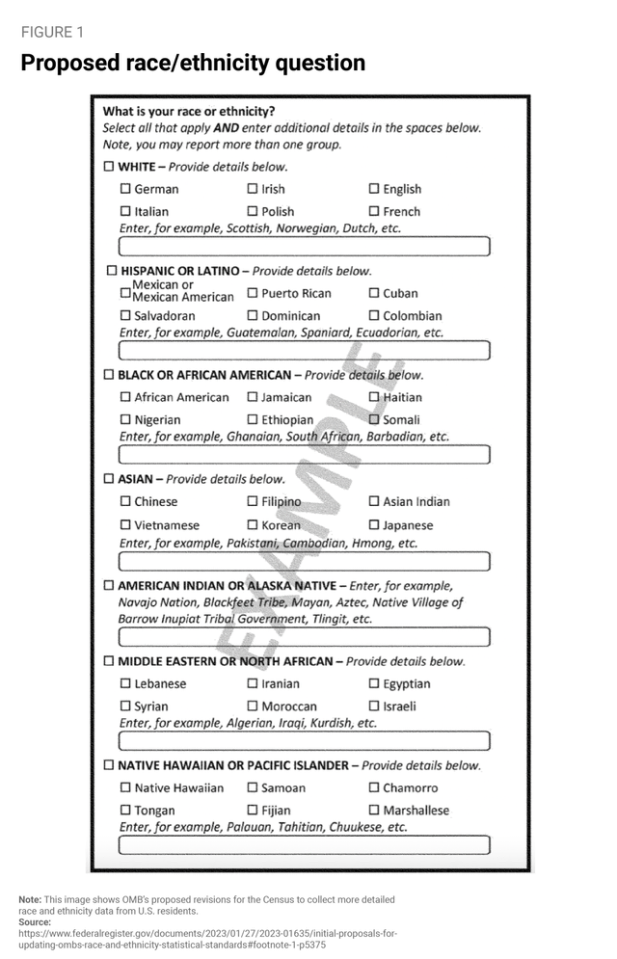
Collecting disaggregated data upfront would allow analysts to use aggregated data, if needed, but also examine subcategories to identity patterns or needs that might otherwise have gone unnoticed. For example, the Asian community is often treated as a monolith, but when examined further, Southeast Asians are dropping out from high school at higher rates and enrolling in college at lower rates compared to South and East Asians. The same data also defies the myth that Latinos are one big group, similarly, showing Central American students dropping out of high school at higher rates and enrolling in college at lower rates compared to other Latino subgroups. Our awareness of, and response to, these patterns require a nuanced understanding of them.
A potential approach to pilot would add an additional layer by asking for subcategories by region first, followed by specific countries of origin. For analysts and researchers disaggregating data, this option may prove useful since sample sizes may become too small for any meaningful disaggregation by country. For example, after selecting “Latinos,” there could be a drop-down list that could include the following subcategories: Puerto Rican, Mexican, Central American, Caribbean American, South American, Spanish, and/or Afro-Latino, followed by subgroup questions of countries of origin. Adding the Afro-Latino option under the Latino and Black subcategory is important to ensure that individuals who are Latino are still prompted to elect their Black identity (a concern expressed in the OMB listening sessions).
Third, for collecting data on Indigenous peoples, the options in the census form in Figure 1 should be guided by direct consultations with Native nations. The U.S. government has not collected Indigenous data accurately for centuries, leading to undercounting Native people and a way of seeing Indigenous communities through a deficit lens (e.g., using “Indian” until 1950). Here, it is important to note that the census relies on individuals’ self-identification of their racial and ethnic identities, whereas Native nations rely on tribe membership. Put another way, as Native writers have stressed, Native American is not a racial identity but rather a political one. This fundamental difference in identification has led to inaccurate data collection, undercounting, and potentially a masking of inequities.
Advocates and scholars argue for the decolonization of Indigenous data by repositioning the authority back to Indigenous peoples. In education, this means directing resources, data infrastructure, and investment in personnel capacity to tribally controlled schools and to the Bureau of Indian Education to give Native nations Indigenous data sovereignty–the right for each U.S. Native tribe to collect, own, and use its own tribe’s data.
By following these proposed changes, the federal government will set a model for other local government agencies to follow, and lead in a more accurate, nuanced, and respectful collection of data on race and ethnicity. Rather than convening every 30 or so years, OMB and the U.S. Census Bureau should have a standing working group to regularly gather feedback from communities to continuously improve data collection. These efforts will help us understand the inequities in our society, identify solutions to remedy these inequities, and make changes in our policies and institutions to address the effects of systemic racism. While thoughtful data collection is not sufficient for these pursuits, it is certainly necessary—and long overdue.
2 notes
·
View notes
Photo
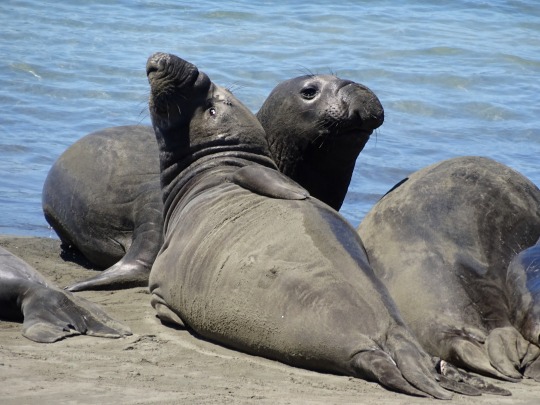




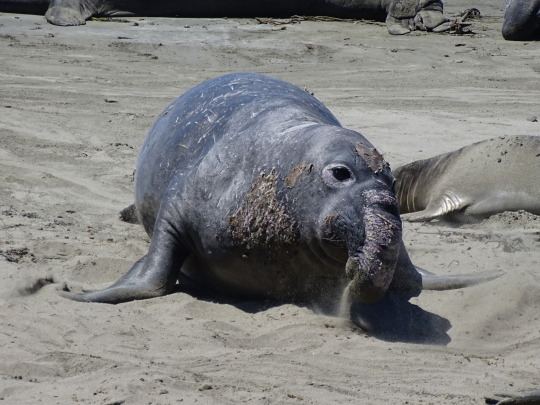




World Aquatic Animal Day
Did you know the ocean contains about a million different species? Learn about marine life, visit an aquarium, or raise awareness about the threats to the ocean.
Because (most) humans do not actually live underwater, it is easy to forget the vast array and variety of aquatic animals that populate the oceans, seas, lakes, and other bodies of water on our planet!
Aquatic animals may be vertebrates or invertebrates. They may breathe air or extract oxygen through gills or the skin. And they may live in either freshwater or saltwater. But no matter what their differences are, one thing is for sure–aquatic animals deserve to be noticed and appreciated!
World Aquatic Animal Day is centered around humans taking the time to learn about and acknowledge the importance of all of these creatures who make their homes in the water.
History of World Aquatic Animal Day
Created in 2020, World Aquatic Animal Day was created by folks over at Animal Law Clinic at the Lewis & Clark Law School (Portland, Oregon, USA) who wanted to bring attention to the importance of aquatic animals to our societies and ecosystems. Widely used around the world, aquatic animals are often at risk due to the interactions humans have directly with the animals, or indirectly through the corruption of their habitats.
In addition to ‘fish’, the category of aquatic animals includes a variety of other creatures, such as mollusks, crustaceans, aquatic birds, starfish, corals, aquatic insects, amphibians, marine mammals, reptiles, and more.
The idea for World Aquatic Animal Day is to raise global awareness so that humans all over the world would band together to create policies, laws, education, and outreach that will help to protect these valuable animals. The hope is to elevate the status of these creatures so that people are more likely to take an active role in learning about and acting on behalf of them. Different ideas for protecting these animals continue to be featured, from plastic pollution to climate change issues.
Many organizations throughout the world participated in the first World Aquatic Animal Day in 2020, including Canada, Chile, Australia, South Africa, Kazakhstan, Kenya, Zimbabwe, Croatia, Norway, Russia, Switzerland, the United Kingdom and more.
The hope is that many more will join in for future days in the coming years. The more people who get involved, the better!
How to Celebrate World Aquatic Animal Day
Celebrating the animals under the sea is the idea of World Aquatic Animal Day, and there are tons of ways to do it!
Watch a Documentary about Sea Life
Getting educated about aquatic animals doesn’t have to be boring. Learning from film crews that have been deep-sea diving can be a thrilling way to see, enjoy and appreciate the myriad of animals that live in the water.
Try out these documentaries:
The Blue Planet (2001). First airing on the BBC, this riveting series of shows gives a glimpse into life in the ocean. It was filmed in more than 200 different locations over a five year time period. And Sir David Attenborough’s voice over simply makes the ocean seem that much more compelling.
Turtle: The Incredible Journey (2009). This film uniquely follows the life of one sea turtle beating the odds, from when she was hatched to facing the natural and unnatural threats that occur in the life of such a creature.
Mission Blue (2014). Featuring the life and work of Dr. Sylvia Earl, a marine biologist and oceanographer, this documentary shows her life as it is dedicated to the study of the ocean, having spent thousands of hours of time in its depths.
Life in the Blue (2016). Showcasing the extraordinary variety and range of life that exists in the expanses of the ocean, this documentary specifically targets what takes place just under the surface in a small band of 10 meter deep water. Whether looking for shelter or hunting and foraging for food, aquatic animals participate in a host of activities in this rather small space.
Host an Under the Sea Party
Get family and friends involved in raising awareness of the needs of aquatic animals by inviting them over for a party that dives deep into the theme. Make the place festive with sea-worthy decorations and play tunes from a water-themed playlist (see below).
Serve snacks and desserts that stick with the theme of honoring aquatic animals, including cupcakes adorned with gummy fish, goldfish cheese or graham crackers, cookies baked starfish shapes or a veggie tray organized in the shape of a rainbow fish.
Fruit treats are fabulous for sea-themed parties! Oranges can be easily fashioned to create the look of an octopus by partially peeling eight strips and then leaving them sticking out from the bottom. (Draw on eyes with a non-toxic marker.) Apples can be creatively sliced to appear as crabs, while banana halves can be adorned with an eye and the stem cut to look like dolphins. And a watermelon can be creatively carved to channel the look of a sea turtle!
Raise Awareness for Aquatic Animal Day
Get others involved in the issues facing these creatures by holding events at work, school, clubs or other places where the community gathers. Make posters, host lecturers, or create a family-friendly charity event where the money is raised to donated to underwater wildlife funds. Don’t forget to use your voice to let government representatives know about the need to protect these creatures by writing letters to ask them for better rules, regulations, and laws.
Put Together an Aquatic Animals Playlist
Getting into the groove of music is a great way to bring sea creatures to the forefront of the mind–whether alone or at a party! Gather some eclectic songs together in a playlist on Spotify or another music hosting venue and jam in honor of the aquatic animals.
Try some favorite songs such as these, or come up with other creative ideas:
Too Many Fish in the Sea (1983) by The Marvelettes
Under the Sea (1989) Soundtrack from The Little Mermaid
Dead Sea (2012) by The Lumineers
Sea of Love (1959) by Phil Phillips
Across the Sea (1996) by Weezer
Only the Ocean (2010) by Jack Johnson
Deep Ocean Vast Sea (1989) by Peter Murphy
Sittin’ on the Dock of the Bay (1968) by Otis Redding
Source
#wildlife#harbor seal#American Alligator#Everglades National Park#travel#Green Cay Nature Center & Wetlands#Elephant Seals of San Simeon#USA#Northern elephant seal#Giant green anemone#Point Arena#beaver#Canada#Morro Bay#sea otter#original photography#vacation#Grand Falls#California#Pacific Ocean#World Aquatic Animal Day#3 April#WorldAquaticAnimalDay
4 notes
·
View notes
Text
Langbaan, Multnomah Whiskey Library, Dai Due 2024 A Year To Cheer

This year I saw people that I am proud to know and places I am proud to have been a part of achieve remarkable accolades.
Langbaan, winning the 2024 national title of Outstanding Restaurant for James Beard Foundation was thrilling to see. I worked there just shy of 2 years as their wine director. If you only could see just how much work and detail Earl and his crew put forth each and every day, you would understand just how elated the team is in earning this well-deserved and highly coveted award. I met Earl Ninsom in 2011 when I worked at Biwa, just before he opened Paadee. I was surprised when he asked me to do the wine program at Langbaan in 2016. In retrospect as a Portland wine director for hire, I carved out a niche for working with Asian restaurants. I didn’t plan it that way, but ended up curating the programs for Biwa, Noranecko, Luc Lac, Paadee and Langbaan. I learned so much back then.
The next establishment, Multnomah Whiskey Library, achieving Top 4 Finalist World’s Best Spirits Selection presented by Tales of the Cocktail Foundation was another accomplishment I massively cheered. This was the third time they made the Top 4 in this category, the first time being in 2015. What’s remarkable is this 10 years span between the first Top 4 nod and 2024’s achievement, which shows their unwavering commitment. My journey began at MWL in 2013 when it first opened. I was honored that the founders, Greg Goodman and Alan Davis brought me on. I’m sure I contributed to the program, but I feel I got more than I gave, acquiring more knowledge in such a short span of time. As far as the owners go, Greg and Alan were by far the best I have ever worked for in my career. I had all the tools I needed to succeed, and I have many fond memories. That opening team, yikes! So much talent. After opening Shift Drinks, guests would ask me how I liked it at MWL. I’d always reply, “I’d still be working there, if the opportunity to open my own place didn’t come up.”
Jesse Griffiths and Dai Due, being awarded the Michelin Green Star is the most recent good news I enjoyed reading. I’ve known Jesse Griffiths since we were both in our twenties. We worked together at Tocai. He was just starting out, was already quite talented and incredibly cerebral, like off the charts smart. Later in Austin when Anne and I were newly married we enjoyed going to his dinners when Dai Due was a supper club. The last time I was in ATX, 2015, I got to visit Dai Due in its brick & mortar state. I was really happy Jesse was onsite and got to get the tour. The food was ridiculously delicious. I walked away from that experience thinking Dai Due had out-Portlanded Portland with its sustainable, hyperlocal focus. Jesse and team totally deserve this recognition.
I’ve been on so many talented teams in my career. I can say with the utmost conviction that the best part of the job is the team. Working together, gaining experience, honing skills, sharing stress to rise above chaos and have each other’s backs. Yet as great teams go, they are transient. It seems that our lives intersect for brief moments as our careers and ambitions take us in different directions. What remains are the memories and any skills you may have picked up while working together. It’s an added bonus when you see your former coworkers get the acknowledgement they’ve worked so hard to achieve. Above, top left - Chef Jesse Griffiths & me at Dai Due; top right - Earl Ninsom & me at Shift Drinks; bottom - At Multnomah Whiskey Library, three of my most favorite people I ever had the pleasure to work with, Alise Moffatt [jiggering], who would later become our business partner at Shift Drinks; Jordan Felix [in apron], now killing it as on-premise portfolio manager for Suntory and Jason Carlisle [in vest]. Rest In Peace Jason, you truly were "A+"
0 notes
Text
New Jersey Nets Acquire Mikki Moore in Trade with Seattle

On July 27th, 2006, the Seattle SuperSonics traded center Mikki Moore to the New Jersey Nets for a 2009 second round draft pick (Derrick Brown).
The 2005 offseason saw several changes happen for the Seattle SuperSonics. Head coach Nate McMillan departed for the Portland Trail Blazers and veterans Jerome James and Antonio Daniels left in free agency. McMillan was replaced by assistant Bob Weiss.
Finishing with a 52-30 record the previous year, the Sonics had some retooling to do around stars Ray Allen and Rashard Lewis. To shore up the frontcourt, the Sonics signed Mikki Moore to a two-year contract worth about $2.1 million.
The Sonics got off to a slow start under new head coach Bob Weiss. With the team at 13-17, Seattle fired Weiss and replaced him with assistant Bob Hill. The team was ranked last in defensive efficiency and never could turn the season around. Seattle finished the year 35-47. Moore appeared in 47 games (one start) and contributed 3.3 PPG, 2.8 RPG and 0.6 APG in 12.4 MPG.
After the season, Moore exercised his $1.07 million player option for the 2006-07 season. The SuperSonics had three young centers on the roster in Robert Swift, Johan Petro and incoming 2006 lottery pick Mouhamed Saer Sene. There was less of a need for Moore on the roster. So the Sonics offloaded Moore to the New Jersey Nets for a second round pick in 2009.
The Nets however lacked depth at the center, especially after the club found out rookie big man Josh Boone would be out for the foreseeable future with a left shoulder injury.

Moore joined the Nets for a second stint. Previously, he played four games with the Nets during the 2003-04 season. Moore was a backup center and power forward. Starting center Nenad Krstic tore the ACL in his left knee in a game in late December. With Krstic out for the season, Moore's role in New Jersey expanded significantly.
He became a starter in the frontcourt alongside Jason Collins for the rest of the season. Moore put together a career season, producing 9.8 PPG, 5.1 RPG, 0.9 APG, 0.6 SPG and 0.8 BPG in 26.4 MPG. Moore's ability to finish around the rim on feeds from Nets star Jason Kidd and consistent shooting from midrange played a part in him leading the NBA in field goal percentage (60.9%). He was the first undrafted player in NBA history to lead the league in that category.
The Nets began the 2006-07 season with a 5-3 record. However, the team went 6-15 over the next 21 games and was 11-18 after 29 games. New Jersey continued to alternate winning and losing streaks. In late March, New Jersey was in ninth place with a 31-38 record. The team had a strong finish, going 10-3 over the final 13 games to finish 41-41.
New Jersey was the sixth seed in the East and faced division rival, the Toronto Raptors in the first round. Adding to the storyline was former Raptor hero and now Nets villain Vince Carter returning to battle the team he departed from in 2004. Game One was an early afternoon tip-off.
Led by forward Richard Jefferson, the Nets jumped out to a lead in the first quarter. New Jersey led by as much as 15 points late in the third quarter. Toronto made a run in the fourth quarter, cutting the deficit to one point with 4:10 left after two consecutive field goals from José Calderón. The Nets went on a 7-1 run and held on for a 96-91 win.
The Nets had a chance to take a second consecutive game in Toronto, building a five-point lead after three quarters. Raptors star Chris Bosh came through in the clutch, scoring 11 of his 25 points in the final frame as Toronto outscored New Jersey 31-20 to win 89-83 and even the series.
In New Jersey for the third game, the Raptors got off to a poor start, falling behind by double digits in the game's first five minutes. Dealing with a knee strain, Nets guard Jason Kidd was a mastermind with 16 points, 16 rebounds and 19 assists as New Jersey cruised to a 102-89 victory.
Game Four was even worse for the Raptors. Carter had 27 points, seven rebounds and seven assists as the Nets led by as much as 33 points in a 102-81 laugher. Facing a 3-1 deficit, the Raptors played better at home in Game Five. Toronto led by as much as 17 points in the second half but the Nets made a comeback.
Carter knocked down a three with 27.6 seconds left in the game to make the deficit one point. Bosh was fouled and made two free-throws, then Moore had a putback to get the Nets within one again. After Bosh made one of two foul shots, Nets forward Boštjan Nachbar missed a three that would've won the game. Toronto took the game 98-96.
Game Six was also close. In a see-saw affair, the Raptors took a 46-43 lead at halftime. The Nets gained momentum in the third and built a 78-68 edge early in the fourth quarter. But Toronto battled back, going on an 11-2 run over three minutes to get within one point.
The game would be tight from the eight minute mark to the end. With 47.9 seconds left, the Raptors took a 97-96 lead after a corner jumper from Bosh. After Carter missed a jumper, 10 seconds later, Bosh missed a midrange attempt with 16.9 seconds left.
On New Jersey's next possession, Jefferson spun around Bosh and converted around the rim to give New Jersey a 98-97 lead with 8.3 seconds on the clock. Toronto had a chance to win but Calderón's entry pass to Bosh in the post was intercepted by Jefferson and the Nets won the game and the series 4-2. Moore started all six games in the first round, amassing 7.7 PPG, 6.5 RPG, 1.0 APG, 0.7 SPG and 0.8 BPG in 29.8 MPG.
The Nets moved on to the second round where they matched up with LeBron James and the Cleveland Cavaliers. The series opener was a close game guided by defense. James had 21 points and the Cavs made enough defensive plays down the stretch to win 81-77.
The second game in Cleveland was similar. James had 12 of his 36 points in the fourth quarter and Cleveland used a decisive 11-5 run during the last three minutes and 20 seconds to take the game 102-92. Facing a 2-0 deficit, the Nets trio of Kidd, Carter and Jefferson had 23 points apiece and the Nets outrebounded Cleveland 43-30 in a 96-85 New Jersey victory.
Game Four saw Cleveland's defense take charge. The Cavs limited the Nets to just four fastbreak points. The game went down to the final seconds. New Jersey was down two after James split a pair of free-throws with 10.3 seconds left. Carter had the ball but was double-teamed by Eric Snow and Larry Hughes, and turned the ball over. James had 30 as Cleveland won 87-85. In the loss, Moore had a career night, pouring in 25 points.
youtube
Facing a 3-1 series deficit, the Nets took early control in Game Five. New Jersey held a nine-point edge at halftime and went up by as much as 22 points in the third quarter. The fourth quarter was a struggle for both teams offensively. New Jersey scored just six points in the fourth. The Cavs weren't much better, dropping in 13. Both teams shot a combined 4-32 in the final frame with 12 turnovers. Still, New Jersey held on for an 83-72 win.
In Game Six, James scored 14 points in the first quarter as Cleveland built an early 32-15 advantage. The Nets made a run in the third quarter cutting the deficit to one point on a Kidd layup with 52.9 seconds left in the quarter.
Cleveland outscored the Nets 27-12 to win the game 88-72 and take the series in six. Moore was effective in the second round, scoring double figures in all six games. The big man produced 14.8 PPG on 60% shooting from the field, 4.7 RPG, 1.3 APG and 1.0 SPG in 36.7 MPG. He also had a penchant for kerfuffles with Cavs players throughout the series.
Moore became a free agent in the 2007 offseason and his career-best performance in the regular season and solid playoff run for the Nets made him an attractive option for teams to pursue on the market.
New Jersey offered Moore a three-year, $11 million contract with a deadline. As Moore pursued other options the deadline passed and the Nets withdrew the offer. Moore eventually signed a three-year, $17.4 million deal with the Sacramento Kings. The final year of the contract was partially guaranteed for $2 million.

By 2008, the Sonics had relocated to Oklahoma City and renamed themselves the Thunder. The 2009 second round pick the Nets sent to the franchise was traded in August of 2008 to the Charlotte Bobcats for the draft rights of guard Kyle Weaver. The Bobcats later selected Xavier small forward Derrick Brown with the pick which was in the 40th spot of the draft.

New Jersey Nets president of basketball operations Rod Thorn on Mikki Moore (via Nets.com):
"We are pleased to add Mikki to our roster. He is a veteran presence who will add depth to our frontcourt rotation."
Nets general manager Ed Stefanski on acquiring Moore (via New York Post):
"We really felt it was necessary that we got a veteran big. We got a guy who can run the floor, he's athletic, he can make an open shot, has good hands and he's a good team defender. We felt we had to add to the depth, especially with Boone getting injured."
Sonics general manager Rick Sund on the trade (via Sonics.com):
"Mikki was always a true professional and we would like to thank him for all of his contributions on and off of the court. We are pleased with the current depth of our roster in the post position and look forward to seeing what our three young centers bring to the court this season."
On Moore (via Seattle Post-Intelligencer):
"Mikki did some good things for us. This just clears up some space in the middle and allows Mikki to go where he can get playing time."
Image via Image of Sport
1 note
·
View note
Text
Neon Cross
by n0isy_gh0st Before Monsignor John Pruitt departs for Crockett Island to become its first pastor, he fills in for an ailing priest in downtown Portland. It's nearing Halloween and the veil is thin. Then, the sound of a mighty pipe organ drifts into the sacristy and draws him out into the nave, where a young, crow-haired musician fills the night with his music. First, John falls in love with the music, but when they meet again on Crockett, John falls for the man himself. So ensues a long, secret love affair filled with exploration, awakenings, and delicious, glorious blasphemy. But when John meets Mildred Gunning, his heart is split in two. He must choose between the safety of a heteronormative relationship and maintain his priesthood, or remove the collar and embark on a life of thrill and adventure with Lugosi. In the end, there might be a twisted way he can have them both... Words: 2402, Chapters: 1/1, Language: English Fandoms: Midnight Mass (TV) Rating: Mature Warnings: Graphic Depictions Of Violence Categories: M/M Characters: Father Paul Hill | Monsignor John Pruitt, Original Male Character(s), Riley Flynn, Mildred Gunning Relationships: Father Paul Hill | Monsignor John Pruitt/Original Character(s) Additional Tags: Monsignor Pruitt is bisexual, Queer Themes, LGBTQ Character, Alcohol Abuse/Alcoholism, Recreational Drug Use, repressed sexuality, Vampires, Love Triangle, Angst, 1970s, Heartbreak November 07, 2024 at 04:08PM Read it on Ao3 » https://archiveofourown.org/works/60396334 ✞ Don’t forget to leave kudos and comments to let the author know you enjoyed their work ✞
0 notes
Text
Portland, Washington D.C., et al. are preparing for election day the way southern states might brace for an incoming Category V hurricane.
However, the destructive force in this case is not Mother Nature but rather a mob of leftist hooligans ready to be unleashed should Trump pull off what looks like a very possible win, even with all of the fraud baked into the election cake.
Back in 2016, when Trump won the first time, mobs of pitchfork leftists — some in pink pussy hats, some in black, great respecters of Democracy™ one and all — took to the streets to express their rage at a democratic outcome to a democratic election.
Related: New Hollywood Hate Flick: White People ‘The Most Dangerous Animal on the Planet’
Via BBC, November 11, 2016 (emphasis added):
“Overnight protests against the election of Donald Trump as US president turned violent in Portland, Oregon.
0 notes
Text

What worked and/or what didn’t: The illustrations were unique and complex. Given that the author is actually a comic artist it makes sense. All the characters were drawn differently and it was easy to keep track of who was who when new characters were introduced.
The story really feels like someone retelling the events of their childhood and early adulthood. The point of view is first person but with the pictures and the way the story is told you get drawn in and it feels very relatable. Graphic novels and comics lend their medium to first person point of view really well .
The tone of this memoir is very humorous and truthful. The author wasn't scared to use strong language or shy away from the troublesome feelings that some people struggle with.The tone made it easy to keep reading and following the journey of the author.
Why I read it: I was looking at the banned book list and many of them are LGBTQ+ themes and I'm always interested in reading banned books. I had seen this book before, but had never actually looked to see what it was about and felt now was as good of time as any. It was informative and had similar vibes to Fun Home which I really enjoyed.
How I enjoyed it: I read this as an ebook that I borrowed through Libby. Digital format is my preferred way to read.
Category Chosen: Banned Book
Citation: Kobabe, M., & Kobabe, P. (2020). Gender queer: a memoir. Portland, OR, Oni Press.
0 notes
Text

Esperanza Emily Spalding (October 18, 1984) is a bassist, singer, songwriter, and composer. Her accolades include five Grammy Awards, a Boston Music Award, a Soul Train Music Award, and two honorary doctorates from her alma mater Berklee College of Music and CalArts.
She began playing music professionally in her childhood, performing as a violinist in the Chamber Music Society of Oregon at age five. She was self-taught and trained on other instruments, including guitar and bass. Her proficiency earned her academic scholarships to Portland State University and the Berklee College of Music, both of which she attended, studying music.
She released her first album, Junjo, she released her self-titled album. Her third studio album, Chamber Music Society, charted at #34 on the Billboard 200, resulting in Spalding winning her first Grammy Award for Best New Artist; she was the first jazz artist to win in this category. She saw further acclaim for her fourth release, Radio Music Society, which earned the Grammy for Best Jazz Vocal Album, as well as the track “City of Roses” winning for Best Arrangement, Instrument and Vocals. She released her fifth studio album, titled Emily’s D+Evolution. She released the album Exposure. Her sixth studio record, 12 Little Spells, peaked at #1 on Billboard’s Top Jazz Albums. The album saw her nominated for two Grammy Awards, winning in the Best Jazz Vocal Album category.
She has worked as an instructor, first at the Berklee College of Music. She was appointed professor of the Practice of Music at Harvard University, a position she resigned from in 2022.
She is a practitioner of the Soka Gakkai International tradition of Nichiren Buddhism.
She donated a portion of proceeds from merchandise sales to the non-profit organization Free the Slaves. She performed a benefit for Bienestar. She appeared with Herbie Hancock at the Lions of Justice Festival, to support the respect and dignified treatment of all people. She is an advocate for parks and open spaces and is a supporter of The Trust for Public Land. #africanhistory365 #africanexcellence
0 notes
Text
Portland? Portland!
read it on AO3 at https://ift.tt/ogWdPXm by rec_222 Kaminari wouldn’t call himself book smart, exactly, but he liked to think he knew his friends well enough to know when something was up. And something was, in fact, up with Kirishima and Bakugou, and had been ever since they graduated high school last month. On top of that, all of Kaminari’s friends would be off doing bigger and better things in just a couple of months come the summer’s end, and Kaminari would still be serving coffee to the locals after it was all over. It could all only mean one thing: one last adventure to top them all! Or, at least it should’ve been one last adventure… but Kaminari’s lack of wits turn one night into a 46 hour drive and a LOT of drama. Or: Bakusquad American high school road trip fic!! Pining kiribaku! Kaminari insecurity angst! The whole shebang! Words: 2433, Chapters: 1/?, Language: English Fandoms: 僕のヒーローアカデミア | Boku no Hero Academia | My Hero Academia (Anime & Manga) Rating: Teen And Up Audiences Warnings: Creator Chose Not To Use Archive Warnings, No Archive Warnings Apply Categories: F/F, F/M, M/M Characters: Bakugou Katsuki, Kirishima Eijirou, Kaminari Denki, Sero Hanta, Jirou Kyouka, Ashido Mina, Midoriya Izuku, Todoroki Shouto, Iida Tenya, Uraraka Ochako, Asui Tsuyu Relationships: Bakugou Katsuki/Kirishima Eijirou, Kaminari Denki/Sero Hanta, Kaminari Denki & Kirishima Eijirou, Ashido Mina & Bakugou Katsuki & Jirou Kyouka & Kaminari Denki & Kirishima Eijirou & Sero Hanta Additional Tags: Road Trips, Angst, Kaminari Denki-centric, for the first couple chapter then the kiribaku rly picks up, Alternate Universe - High School, Alternate Universe - No Quirks (My Hero Academia), Insecure Kaminari Denki, if u like kaminari angst u will love this lol, Slice of Life, sort of but more like, Coming of Age, Bakusquad-centric (My Hero Academia), Bakusquad (My Hero Academia), Other Additional Tags to Be Added read it on AO3 at https://ift.tt/ogWdPXm
1 note
·
View note
Text
Unstrung
read it on AO3 at https://ift.tt/3M96c5x by Hard_boiled_candy It's an average morning at a Portland OR DMV, but it's the start of a friendship between Cas Novak the luthier and heavy equipment mechanic Dean Winchester that becomes so much more. Words: 14446, Chapters: 1/1, Language: English Fandoms: Supernatural (TV 2005) Rating: Explicit Warnings: Creator Chose Not To Use Archive Warnings Categories: M/M Characters: Bobby Singer (Supernatural), Benny Lafitte, Garth Fitzgerald IV, Jack is Castiel's Son - Character, Claire is Castiel's daughter - Character Relationships: Castiel/Dean Winchester Additional Tags: Explicit Consent, Explicit Sexual Content, Explicit Language, Frottage, First Time Blow Jobs, Autistic Castiel (Supernatural), Slow Build read it on AO3 at https://ift.tt/3M96c5x
0 notes
Text
The Way of the Peanut: 3 Caterable Dishes That Feature the Peanut
Goober, pindar, groundnut, monkey nut—the peanut has many names and a unique flavor with a wide variety of uses. Interestingly, because of its high oil content, the peanut is classified as both a grain legume and an oil crop.

Of course, many of us in the United States first think of peanut butter when we think of peanuts. It’s true, the classic peanut butter and jelly sandwich remains undefeated, but there are many other cuisines featuring peanuts that are worth exploring during National Peanut Month this March. As long as there are no peanut allergies in your office, this month is a fantastic time to order corporate catering so your team can try out a variety of peanut-forward dishes. If you’re inspired to celebrate National Peanut Month, check out these three caterable dishes featuring peanuts. Mirchi Ka Salan Mirchi ka salan hails from India and contains flavorful ingredients such as green chili peppers, tamarind juice, and, of course, peanuts. It’s a traditional dish often prepared for special occasions such as weddings and served with rice or chapati. But that doesn’t mean you can’t enjoy mirchi ka salan with your office team. For example, if you’re located in The Biggest Small Town in America, you can find the finest catering Columbus Ohio has to offer when you explore Indian restaurants such as New India Restaurant, Awadh India Restaurant, or Spice9. Vegetable Stir Fry This is a fairly broad category that could include dishes from all over East Asia and beyond. From Japanese recipes to Chinese cuisines, Thai food, and much more, there are many versions of stir fry that use peanuts to achieve a rich, robust flavor. Fortunately, no matter where you’re located in the US, there’s likely a restaurant serving stir fry dishes near you. For example, in Music City USA, your office team can enjoy the top stir fry catering Nashville has to offer when you order from Thai Satay, Lucky Bamboo Restaurant, and Hawkers Asian Street Food. Peanut Butter Cookies Of course, savory dishes aren’t the first thing that comes to mind for many when they think about food featuring peanuts. Peanuts are often front-and-center in sweet treats as well, from peanut brittle to peanut butter cookies. The great thing about ordering peanut butter cookies to celebrate National Peanut Month? It’s easy to add some peanut-free cookies to your order to ensure that none of your team members with peanut allergies are accidentally left out of the fun. No matter where your office is located, there are plenty of places nearby to order delicious cookies. For example, if your team works in Oklahoma City, you’ll find the best dessert catering OKC has to offer when you check out The Barlor, Dirty Dough Cookies, and other local favorites. About ezCater There’s nothing quite like having a freshly prepared lunch delivered directly to your office in the middle of the workweek. With ezCater, you can order a delicious lunch without missing a beat. ezCater is the online catering platform businesses rely on to deliver food for work. Order individual boxed lunch catering or a full catered buffet for a corporate event—ezCater scales to your needs! They’re also partnered with over 100,000 restaurants and caterers in every state, coast to coast. No matter where your business is located, you’re just a few quick clicks from delectable, freshly prepared food. You can explore the top-rated catering Portland has to offer, or you can see what kind of Cincinnati catering options are available near you. It’s that easy! Celebrate National Peanut Month with corporate catering from ezCater at https://www.ezcater.com/ Original Source: https://bit.ly/3wQCazR
0 notes
Text



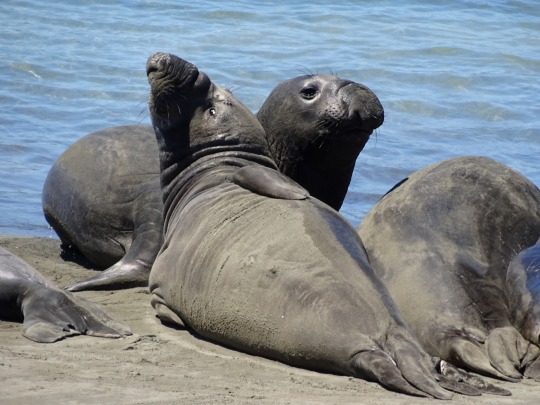







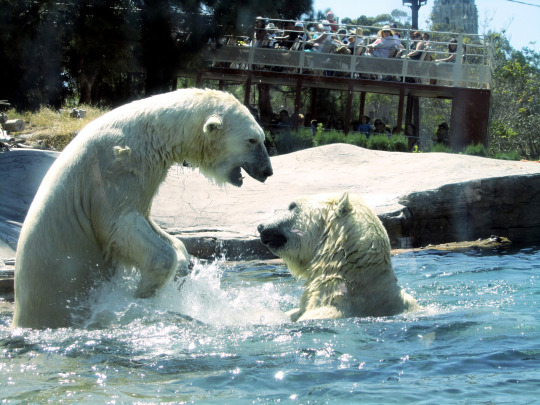




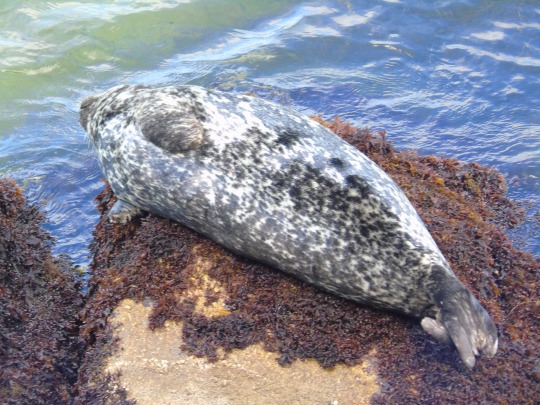



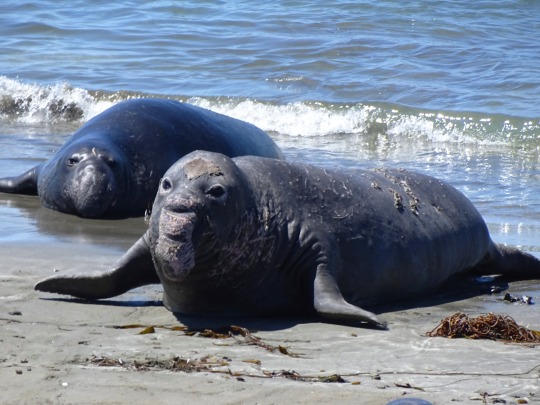

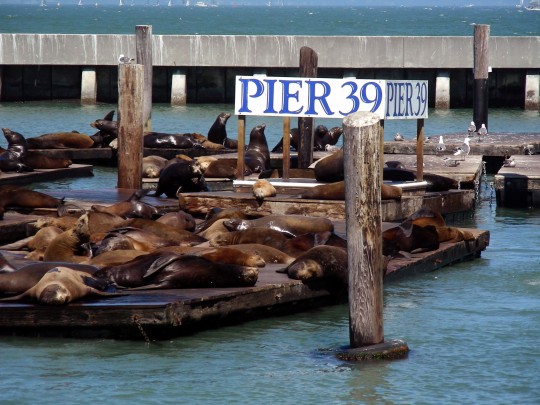


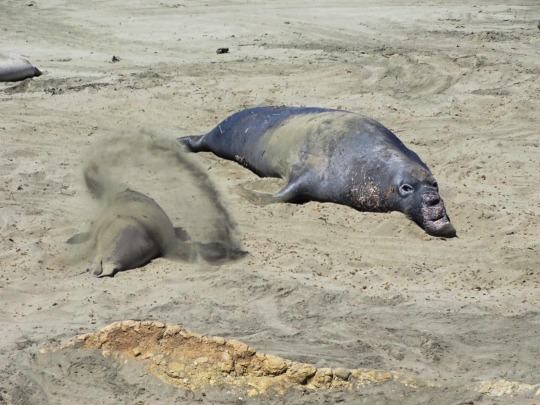




World Aquatic Animal Day
Because (most) humans do not actually live underwater, it is easy to forget the vast array and variety of aquatic animals that populate the oceans, seas, lakes, and other bodies of water on our planet!
Aquatic animals may be vertebrates or invertebrates. They may breathe air or extract oxygen through gills or the skin. And they may live in either freshwater or saltwater. But no matter what their differences are, one thing is for sure–aquatic animals deserve to be noticed and appreciated!
World Aquatic Animal Day is centered around humans taking the time to learn about and acknowledge the importance of all of these creatures who make their homes in the water.
History of World Aquatic Animal Day
Created in 2020, World Aquatic Animal Day was created by folks over at Animal Law Clinic at the Lewis & Clark Law School (Portland, Oregon, USA) who wanted to bring attention to the importance of aquatic animals to our societies and ecosystems. Widely used around the world, aquatic animals are often at risk due to the interactions humans have directly with the animals, or indirectly through the corruption of their habitats.
In addition to ‘fish’, the category of aquatic animals includes a variety of other creatures, such as mollusks, crustaceans, aquatic birds, starfish, corals, aquatic insects, amphibians, marine mammals, reptiles, and more.
The idea for World Aquatic Animal Day is to raise global awareness so that humans all over the world would band together to create policies, laws, education, and outreach that will help to protect these valuable animals. The hope is to elevate the status of these creatures so that people are more likely to take an active role in learning about and acting on behalf of them. Different ideas for protecting these animals continue to be featured, from plastic pollution to climate change issues.
Many organizations throughout the world participated in the first World Aquatic Animal Day in 2020, including Canada, Chile, Australia, South Africa, Kazakhstan, Kenya, Zimbabwe, Croatia, Norway, Russia, Switzerland, the United Kingdom and more.
The hope is that many more will join in for future days in the coming years. The more people who get involved, the better!
How to Celebrate World Aquatic Animal Day
Celebrating the animals under the sea is the idea of World Aquatic Animal Day, and there are tons of ways to do it!
Watch a Documentary about Sea Life
Getting educated about aquatic animals doesn’t have to be boring. Learning from film crews that have been deep-sea diving can be a thrilling way to see, enjoy and appreciate the myriad of animals that live in the water.
Try out these documentaries:
The Blue Planet (2001). First airing on the BBC, this riveting series of shows gives a glimpse into life in the ocean. It was filmed in more than 200 different locations over a five year time period. And Sir David Attenborough’s voice over simply makes the ocean seem that much more compelling.
Turtle: The Incredible Journey (2009). This film uniquely follows the life of one sea turtle beating the odds, from when she was hatched to facing the natural and unnatural threats that occur in the life of such a creature.
Mission Blue (2014). Featuring the life and work of Dr. Sylvia Earl, a marine biologist and oceanographer, this documentary shows her life as it is dedicated to the study of the ocean, having spent thousands of hours of time in its depths.
Life in the Blue (2016). Showcasing the extraordinary variety and range of life that exists in the expanses of the ocean, this documentary specifically targets what takes place just under the surface in a small band of 10 meter deep water. Whether looking for shelter or hunting and foraging for food, aquatic animals participate in a host of activities in this rather small space.
Host an Under the Sea Party
Get family and friends involved in raising awareness of the needs of aquatic animals by inviting them over for a party that dives deep into the theme. Make the place festive with sea-worthy decorations and play tunes from a water-themed playlist (see below).
Serve snacks and desserts that stick with the theme of honoring aquatic animals, including cupcakes adorned with gummy fish, goldfish cheese or graham crackers, cookies baked starfish shapes or a veggie tray organized in the shape of a rainbow fish.
Fruit treats are fabulous for sea-themed parties! Oranges can be easily fashioned to create the look of an octopus by partially peeling eight strips and then leaving them sticking out from the bottom. (Draw on eyes with a non-toxic marker.) Apples can be creatively sliced to appear as crabs, while banana halves can be adorned with an eye and the stem cut to look like dolphins. And a watermelon can be creatively carved to channel the look of a sea turtle!
Raise Awareness for Aquatic Animal Day
Get others involved in the issues facing these creatures by holding events at work, school, clubs or other places where the community gathers. Make posters, host lecturers, or create a family-friendly charity event where the money is raised to donated to underwater wildlife funds. Don’t forget to use your voice to let government representatives know about the need to protect these creatures by writing letters to ask them for better rules, regulations, and laws.
Put Together an Aquatic Animals Playlist
Getting into the groove of music is a great way to bring sea creatures to the forefront of the mind–whether alone or at a party! Gather some eclectic songs together in a playlist on Spotify or another music hosting venue and jam in honor of the aquatic animals.
Try some favorite songs such as these, or come up with other creative ideas:
Too Many Fish in the Sea (1983) by The Marvelettes
Under the Sea (1989) Soundtrack from The Little Mermaid
Dead Sea (2012) by The Lumineers
Sea of Love (1959) by Phil Phillips
Across the Sea (1996) by Weezer
Only the Ocean (2010) by Jack Johnson
Deep Ocean Vast Sea (1989) by Peter Murphy
Sittin’ on the Dock of the Bay (1968) by Otis Redding
Source
#World Aquatic Animal Day#WorldAquaticAnimalDay#3 April#American Alligator#Everglades National Park#original photography#wildlife#flora#fauna#travel#USA#Canada#beaver#harbor seal#Giant green anemone#Sea Otter#Northern Elephant Seals#California sea lions#San Diego Zoo#polar bear#crocodile#Bronx Zoo#Indian Gharial#tourist attraction#summer vacation#vacation#Viveiro#Spain#Vancouver#most of them are wildlife
0 notes